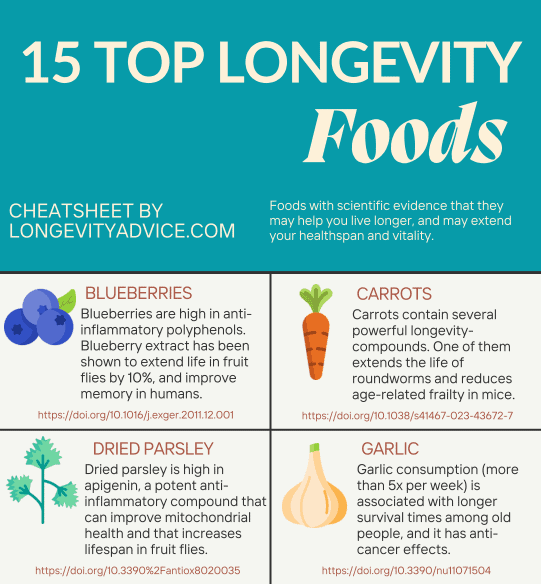Affiliate Disclaimer: Longevity Advice is reader-supported. When you buy something using links on our site, we may earn a few bucks.
For April Fools’ Day, 2021, J.P. and I released a satirical article called, “The 5 Best Cigarette Brands for Longevity.” Joking around, we pointed out that famous supercentenarians like Jeanne Calment, Fredie Blom, and Marie-Louise Meilleur had something in common: they all smoked.
Of course, smoking is just about the worst thing that you can do for your health. But looking at long-lived individuals for clues about how to extend your lifespan might not be.

That was the thinking of Dan Buettner, a National Geographic Fellow and author. In 2000, he trekked out to the “blue zones,” or the five places on earth with the highest concentrations of centenarians, to uncover their longevity secrets. After traveling to Nicoya (Costa Rica), Icaria (Greece), Sardinia (Italy), Okinawa (Japan), and the Seventh-day Adventists in Loma Linda, California with experts in epidemiology, anthropology, geriatrics, and other fields, Buettner, along with his team, found common lifestyle behaviors between all five communities.
Could there be something for spanners to learn from blue zone research?
In this article, we’re going to dig into what the science of longevity actually says about blue zones—both for and against—and how to get started with the blue zone diet if it’s right for you, but first, let’s define what “it” actually is.
The blue zone diet for longevity
The blue zone diet is just about the opposite of low-carb diets for life extension. It consists of about 65% carbs (typically low-glycemic index carbs like purple sweet potatoes and lentils), 20% fats, and 15% proteins. Almost all consumption (95%) is plant-based, and 5% of consumption is animal based.
Of course, the blue zone diet isn’t really about macros. It’s about the ingredients used in the food that one consumes. “Dishes typically contain a half dozen or so ingredients, simply blended together,” the blue zones website explains. “Almost all of the foods consumed by centenarians in the blue zones grow within a 10- mile radius of their homes.”
Blue zone dieters include a half to a whole cup of beans in their daily food intake, along with one to two handfuls of nuts.
They limit their sugar intake to 28 grams (or less) a day and forgo most dairy. The blue zone diet limits fish to three oz, three times a week, and meat to 2oz, less than five times a month.
While researching, I found this graphic to be particularly helpful:

The blue zone lifestyle
Any serious adherent to the blue zone lifestyle would underscore that Dan Buettner’s findings go beyond just diet, however.
Specifically, Buettner underscores the “Power 9,” or the nine behaviors found in all five of the blue zones. Three do have to do with diet:
- 80% Rule: Eat until you’re 80% full and no more.
- Plant Slant: Prioritize plants and beans to fill up your diet.
- Wine @5: Drink one to two glasses of wine daily with family and food.
The other six behaviors, however, have to do with something else. Specifically:
- Have Purpose: Find a reason to get up in the morning.
- Move Naturally: Live in an environment with consistent nudges for slow, deliberate exercise (like gardening, or using manual methods for cooking such as getting rid of your electric hand blender).
- Belong: Join a community that makes you feel welcome.
- Put Your Loved Ones First: Keep aging grandparents and parents nearby. Commit to life partners. Spend time with your children, grandchildren, nephews, and nieces.
- Be a Part of the Right Tribe: Have social circles that support behaviors associated with living long lives.
Researchers have also noted that individuals in blue zones tend to practice various forms of intermittent fasting and caloric restriction.
What does the science say about the blue zone diet?
The “science” is a bit of a hodge-podge.
In The Blue Zones Solution: Eating and Living Like the World’s Healthiest People, Buettner lays out his methodology. Like many other scientific reviews, he searched through PubMed, JSTOR, and other databases to identify what the eating patterns were in each of the five blue zones. Some data, he noted, were unpublished. And I noticed that some were as old as 1949. He adds, “Observational and descriptive studies were then used to interpret and amplify customary practices suggested by nutrition surveys.”
He notes that “research on nutritional eating patterns varies widely in criteria, methods, definitions, information collected, population studied, reliability, and time frame.” Because of this, Beuttner relied heavily on observations.
It’s unclear whether or not the book was peer-reviewed. To its credit, however, there is a lot of good science supporting Buettner’s conclusions.
For example, several studies show that individuals in blue zones do live longer than others. Seeing as genetics only account for 25% of the variability in longevity, there is likely quite a bit that we can learn from these regions.
One key part of the blue zone diet is avoiding meat. Animal protein correlates with higher rates of cardiovascular mortality, and red and processed meat correlates with a higher probability of developing cancer.
People who eat beans in old age tend to live longer. For example, a study published in the Asia Pacific Journal of Clinical Nutrition found that “the legume food group showed 7-8% reduction in mortality hazard ratio for every 20g increase in daily intake with or without controlling for ethnicity” among people older than 70-years-old.
Plant-based diets correlate with longevity as well. Harvard researchers found that eating two fruits and three vegetables a day lowered all-cause mortality, with the exception of starchy vegetables like peas and corn.
Some studies are inconclusive
The science is a little hazier on eggs. The blue zone diet recommends limiting eggs to three total per week, a dosing suggestion that I had trouble finding based on existing research. And that’s not terribly surprising. Some population studies have found that eggs are protective for heart health, whereas others have found that every half-egg consumed per day “was significantly associated with higher risk of incident CVD and all-cause mortality.” As most studies on eggs are observational, it’s tough for researchers to definitively advise for or against eggs without breaking the food down into its micronutrients (not a great way to navigate dietary recommendations).
Alcohol is another area where the research is mixed. A data scientist recently did a meta-analysis of life expectancy and alcohol consumption in his master’s blog. He found that alcohol consumption correlates with being from a wealthier country, which improves life expectancy. But within that wealthy country, alcohol consumption negatively correlates with lifespan. While his analysis wasn’t peer-reviewed, it does account for some 150 studies on PubMed specific to alcohol and life expectancy.
Are there any problems with blue zones research?
Of course, the blue zone diet isn’t just a diet—it’s a whole lifestyle. It’s a series of recommendations that covers everything from exercise to mentality to, of course, food. It’s based on observations from five parts of the world. The conclusions are not peer-reviewed, but there are a number of studies that could substantiate the findings in The Blue Zones Solution: Eating and Living Like the World’s Healthiest People.
All that said, the premise of blue zones themselves is under fire.
For example, a preprint publication points to another commonality found in blue zones: their lack of birth records. Author Dr. Saul Justin Newman concludes, “the designated ‘blue zones’ of Sardinia, Okinawa, and Icaria corresponded to regions with low incomes, low literacy, high crime rate and short life expectancy relative to their national average. As such, relative poverty and short lifespan constitute unexpected predictors of centenarian and supercentenarian status, and support a primary role of fraud and error in generating remarkable human age records.” Of course, per the theme of this article, that research isn’t yet peer-reviewed either.
And even if the blue zones exist, there’s a causality problem. For example, it’s true that people who “have purpose” tend to live much longer than those who don’t. Assuming that most people in blue zones have a sense of purpose, does that account for a majority of their longevity? Does their diet even matter? Or are people’s sense of purpose making up for deficiencies in their diets? It’s impossible to tell.
Finally, all the research on ketogenic diets flies in the face of this carbohydrate-heavy lifestyle. Without rehashing our entire article on low-carb diets, it’s worth noting that some studies have found that high-carbohydrate diets may correlate with higher all-cause mortality as well.
How do I start a blue zone diet?
First off, don’t start any diet intervention without first consulting your doctor, especially if you may have health conditions (like genetic nutrient deficiencies) or comorbidities that could make it dangerous, or if you’re pregnant.As the blue zone diet is derived from Dan Beuttner’s book on the subject, I would advise picking up The Blue Zones Solution: Eating and Living Like the World’s Healthiest People if you’re looking to get started. He walks through each blue zone case study, highlighting how they’re similar and different in his ~300-page book, which is inevitably more detailed than anything you’ll find in a ~2,000-word blog post on the topic.
The blue zone website highlights four things to always eat and four things to always avoid.
Always eat:
- Whole grains
- A handful of nuts/seeds a day
- Beans, legumes, and pulses
- 5-10 fruits and vegetables a day
Always avoid:
- Sugar-sweetened drinks (though some sugar alternatives may be okay)
- Salty processed snacks
- Candy
- Processed meats
Like with any other diet, creating a living space where recommended foods are easy to access is essential for success. Get rid of the four “always avoid” foods first, then slowly start adding in more plant-based foods.
Have you tried the blue zone diet?
Or, since it’s a list of several lifestyle factors, have you integrated any of them into your life?
If so, I’d love to hear about your experience. And if not, why have you chosen not to follow the blue zone lifestyle?
I look forward to reading your comments below!

By day, I am a problem solver, writer, and the co-founder of Longevity Advice. I’m best known for writing about technology and have been featured in Forbes, The Hill, and TechRepublic. When the batteries are powered down and the suit comes off, I’m an enthusiastic hiker, runner, and Rocket League competitor and enjoy discussing minimalism, Studio Ghibli, and Icelandic sheepdogs.




Pingback: Mediterranean Diet for Longevity - Longevity Advice
Pingback: Vegans Diets and Longevity: What Existing Science Actually Says
It’s hard to argue against eating a diet with a variety of healthy unprocessed vegetables, beans, fruit, whole grains, nuts, seeds and minimal animal protein. We know from human populations and all kinds of studies with animals and humans that eating a healthy diet promotes a robust health span. And stuffing yourself with meat at every meal while gorging on cookies, cakes, ice cream and chips will hasten your death and make your life miserable. The Japanese who eat their traditional diets have a much better health span Americans. And as soon as they move to the West and start eating like we do they get Alzheimer’s and all the rest at the same rates that we do. So I think the guy with the conspiracy theories about fake birth dates etc is a kook. Dr Valter Longo has some good ideas about diet and health span. Maybe you could do an interview with him.
Pingback: 9 Best Life Extension Kitchen Products for All Diets
Pingback: 13 Best Longevity Experts and Influencers on Twitter - Longevity Advice